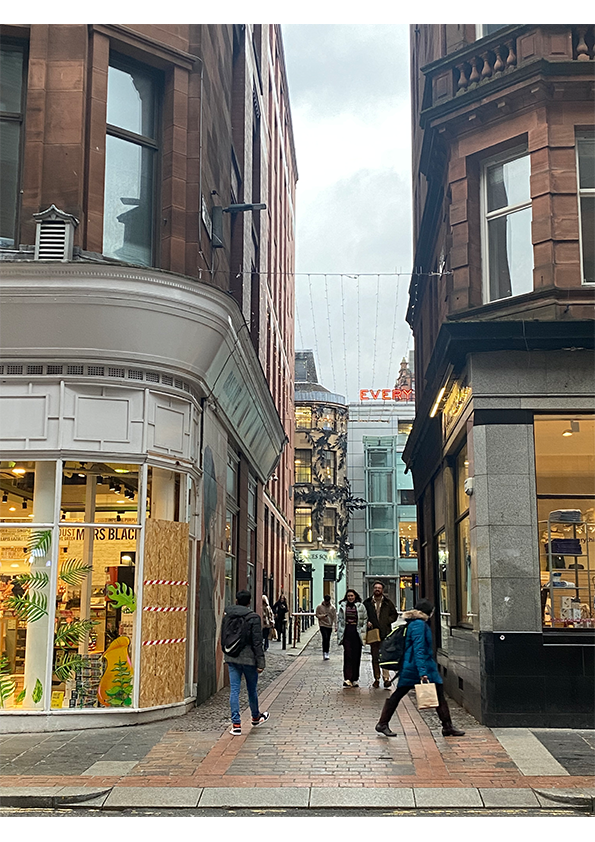There’s something special about a city’s hidden and narrow lanes. They’re intriguing, but they don’t get the attention they deserve. My theme for this narrative is to highlight such hidden lanes. These lanes, in my opinion, serve a larger purpose in a city and add to the antiquity of the Victorian architecture in Glasgow.
A person's subconscious mind is constantly active, and they are constantly judged by their appearance. A person is never assessed on the basis of what they have experienced in their lives at first glance. The same is true for building representation. The secret alleyways, in my perspective, are the ones where the exposed materials have been exposed more and more than the real façade that faces the main roads. Those facades are always well depicted, but I believe the beauty resides in the blend of the modern façade and the façade that has been there for decades concealed in the narrow alleyways.
The lanes are used not only for pedestrians, but also to facilitate the excess items that must be kept on a street, such as trash cans and other old possessions. These lanes also give us a lot of insight into the past. Walking down these narrow lanes gives us a sense of history, and these narrow lanes evolve over time. The crux of the buildings can be found in these hidden lanes. I believe that while these hidden/narrow lanes may not be appealing to many people, they do contribute to the heritage and architecture of the buildings.
When walking through these lanes, a person's mind is filled with a variety of emotions. These thoughts that pique a person's interest in such streets make it interesting, and thus my narrative discusses how these streets are intertwined with human nature and can have an impact not only physically but also mentally.


